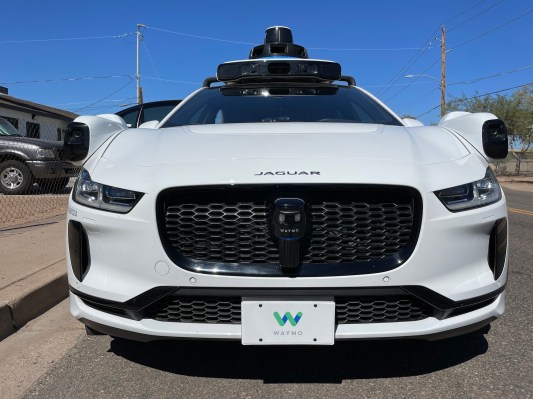The spotlight of hype has lit up many areas since autonomous driving had its own time in the sun, but progress in the technology is chugging along. It’s clear that the dream of not having to drive ourselves around is not dead, given the rising tallies of miles driven by bots, greater commercialization and other headlines.
The Exchange explores startups, markets and money.
Read it every morning on TechCrunch+ or get The Exchange newsletter every Saturday.
 There’s a lot of good news to be found. Today, Chinese technology giant Baidu revealed an interesting set of data points regarding Apollo Go, it’s “autonomous ride-hailing service”:
There’s a lot of good news to be found. Today, Chinese technology giant Baidu revealed an interesting set of data points regarding Apollo Go, it’s “autonomous ride-hailing service”:
Apollo Go, Baidu’s autonomous ride-hailing service, provided around 660K rides in the first quarter of 2023, up 236% year over year and 18% quarter over quarter.
The company also reminded investors that Apollo Go was the first to receive permits in Beijing to “operate ride-hailing services with no driver or safety operator in the vehicles” this March.
So if we presume an average trip of, say, two miles (3.2 kilometers), Apollo Go racked up north of one million miles in the first quarter alone. That’s a lot of autonomous driving.
Baidu’s update follows other progress reports from self-driving car outfits: Cruise a couple of months ago said it had completed “one million fully driverless miles” in the 15 months since it started offering fully driverless rides.
We also covered Cruise’s geographic expansion earlier in May:
Cruise is rolling out its self-driving cars to more cities — specifically, to Houston and Dallas as it expands its Texas-based presence. Cruise already started testing its vehicles in Austin at the end of last year, and announced plans to begin testing its Origin built-for-purpose robotaxis there earlier in 2023.
Alphabet’s Waymo self-driving effort has also expanded its own operating area:
Waymo is doubling its commercial robotaxi service area in the Phoenix metro area, an expansion that will add new suburbs and connect previously isolated sections of the sprawling and car-dependent desert city.
The service area, which now includes Scottsdale, nearly all of Tempe and larger sections of Chandler and Mesa, is 180 square miles in size. That’s about one-third of the 517-square-mile Phoenix metro area. Importantly, it connects downtown to Arizona State University in Tempe and other East Valley suburbs.
Mercedes-Benz is working to bring more lidar tech to its own cars while making progress on autonomy as well.
It’s pretty encouraging to see all this progress from companies that have not given up on the hard work of making cars capable of driving themselves.
But don’t take this optimistic roundup at face value. Not everything is going well in self-driving land: Ford and Volkswagen’s joint project, Argo AI, was shuttered and absorbed by its parent companies in late 2022. That was not the most bullish sign of progress, and Tesla’s own autonomous tech has been in the news a few times and not for the best reasons.
Alibaba’s recent decision to merge its autonomous driving work with its global logistics network indicates that it is prioritizing getting some returns from the expensive work of building self-driving systems. Also, TuSimple got a bit of breathing room to avoid being delisted from the Nasdaq. But the fact that the company wound up where it was before it managed to get its stock price back over the $1 baseline is not wildly encouraging.
Still, it’s been around five years since headlines summarized industry excitement in the following manner:
- Ford will begin testing self-driving cars in a new city in 2018 (January, 2018).
- Waymo’s self-driving cars hit 10 million miles (October, 2018).
- Here’s how Lyft envisions self-driving cars communicating with pedestrians (December, 2018).
It’s now clear that self-driving technology is not “just around the corner, a breakthrough or two away.” A half-decade later, there’s been some real progress — it’s just more incremental than a lot of us expected and is therefore going more slowly than hoped for.
My dream of never having to drive again, then, is far from dead. I just need to add five or 10 years to my prior timelines.
That said, I wonder what the tipping point will be for self-driving cars. It will probably come in two forms: When self-driving tech becomes good and cheap enough to be implanted into fleets of company-owned cars for rentals, and when it becomes sufficiently high-quality and low-priced for regular families to buy.
I presume that the former will happen before the latter, which narrows our question to: When will self-driving tech be good enough for robotaxi fleets to be economically viable without requiring massive corporate subsidies?
Once self-driving cars can generate a little positive operating cash flow, they will no longer be corporate hobbies. Given how growth-starved major tech companies are today, I doubt any of the major players in self-driving would be willing to give up when the tech morphs into a nascent business.
It seems that we are nearly there, though. And when we do finally reach that point, I doubt we’ll ever turn back.
